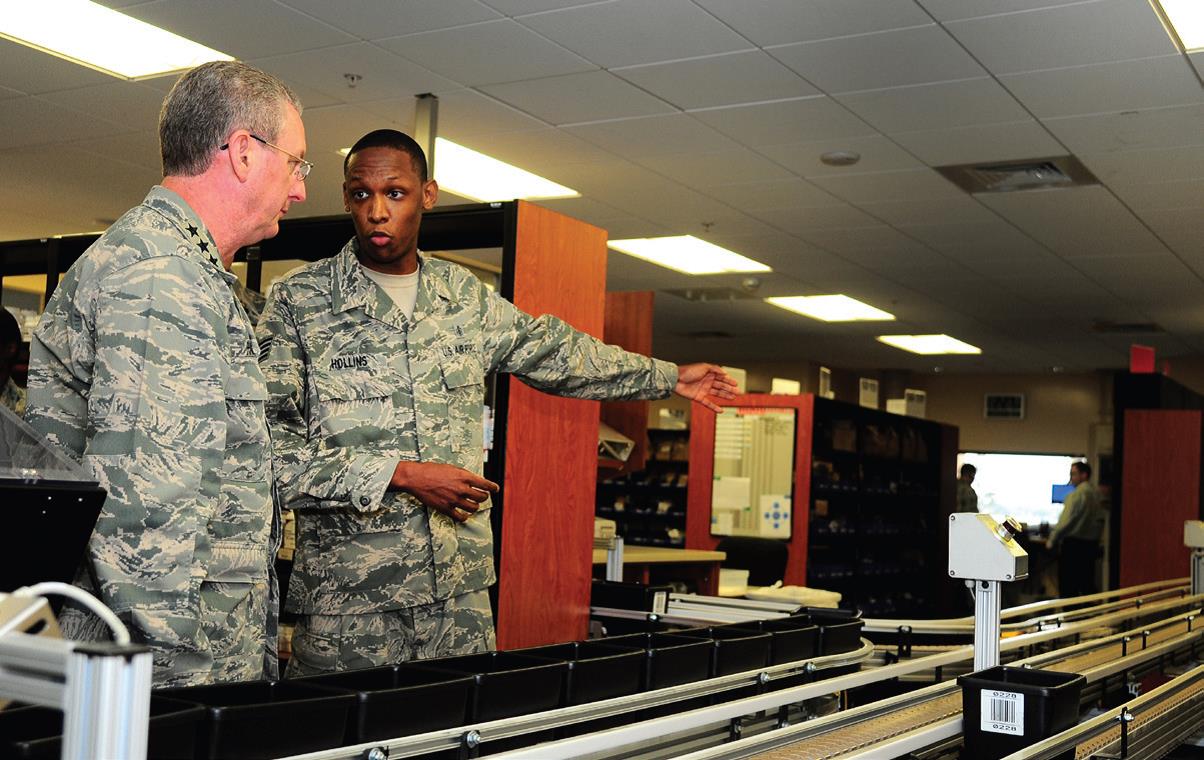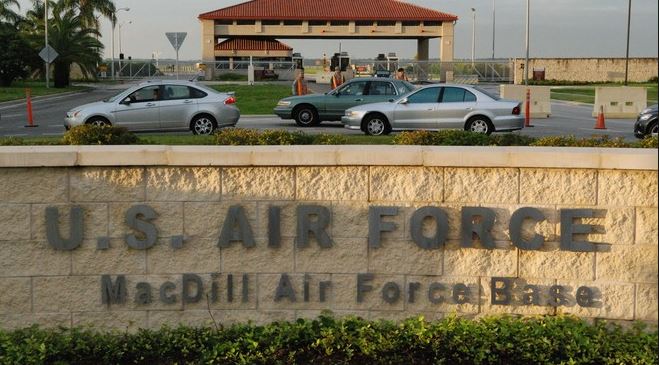Air base MacDill

The case study in pdf you can download here
APPLICATION:
Business Process Improvement
BRANCH:
Military and defense
SECTOR:
Military
BENEFIT:
WITNESS software reduced PharmaCARE drive-thru cycletimes; cutting consumer waitingtimes by 35%
Introduction
Senior military managers recognize that providing a swift and efficient pharmacy service to the largest single medical services catchment area in the Department of Defense – some 106,000 people – is crucial to maintaining high morale and customer service standards at MacDill Air Force Base (AFB), Tampa, FL. By using Lanner’s Simulation technology, the DoD were able to streamline the base’s PharmaCARE Refill Pick-Up drive-thru operations, shaving wait times by up to 35% despite a seasonal increase of orders between 30-35%.
Under the charge of the 6th Medical Group, the PharmaCARE Center provides outpatient pharmaceutical care to all beneficiaries – around 106,000 people – in the DoD’s largest catchment area in the US. MacDill’s PharmaCARE Center Refill Pick-Up drive-thru was a relatively new service at the base intended to act as the central point for picking up all phoned-in refill requests for prescription medications.
Prescription medications are provided to the customer through tube devices at each of the three pick-up points in a drive-thru much like a drive-thru at a bank.
Following several reports of lengthy wait times for the fulfillment of medication orders at the drive-thru facility, Department of Defense representatives at MacDill AFB engaged the services of a Business
Process Improvement (BPI) consultancy to review and optimize the service using Lanner’s WITNESS simulation platform.
Current situation
Shortly after opening the PharmaCARE Centre Refill Pick-Up drive-thru service concerns were raised relating to long lines and excessive wait times of up to 40 minutes, especially during peak customer arrival times.
In addition, there was a growing concern in anticipation of the annual winter retiree migration, which was only months away. Historically, the winter migration resulted
in volume increases of up to 35%. Since issues existed at the current volume, far worse could be expected with the predicted increase.
With the potential for customer dissatisfaction set to rise, the MacDill’s Air Force Smart Operations for the 21st Century (AFSO21) continuous process improvement group was tasked with improving the PharmaCARE Centre Refill Pick-Up service levels.
Working with the support of management consultancy Mainstream GS, the AFSO21 team conducted a ‘Lean’ assessment of the PharmaCARE Center Refill Pick-Up drive-thru’s current processes and procedures.
Due to the high number of process variables, such as the number of prescription medications available, controlled / non-controlled medications, refrigerated medications, and random customer arrival times, the AFSO21 team employed the use of a WITNESS simulation model to analyze the current operation. From the simulation, five main factors that unnecessarily increased customer processing times were identified
- A Lack of Standard Work – there were no common processes or procedures in place to address PharmaCARE’s drive-thru customers
- Labor Intensive – the filing system used to store drugs required excessive manual search times during the picking process. In addition, the packaging process was requiring additional attendant and customer time to verify the correct order
- Customer Confusion – inadequate signage on the drive-thru route was resulting in delays due to unprepared customers arriving at the service window. It was also apparent that service attendants needed scripts to deal with customers more effectively
- Logistics – customers were required to send their military identification cards to the attendant. This resulted in the distribution tube device cycle time (incoming and outgoing) accounting for a major portion of the overall service time
- Non-Value Added Activities – the physical handling of military identification cards bywindow attendants in order to prove eligibility for theservice increased cycle time.

Results
The use of the simulation model was ideal to evaluate the complex processes of the PharmaCARE Center’s drive-thru service. The statistical output of the model also provided the AFSO21 team with insight as to where additional performance improvement areas of opportunity existed.
The simulation model that was developed provided the AFSO21 team with a tool to quickly test, verify, and optimize the entire system before any change or expenditure was committed to the live Drive-thru system, avoiding the possibility of any costly mistakes.
This was also extremely useful for demonstrating the effects of any proposed changes on service levels. In addition, a volume sensitivity analysis could be performed for the forthcoming winter order increase.
The AFSO21 team focused on several initiatives critical to reducing cycle time and improving performance. This targeted focus resulted in key action items including:
- Standard work was implemented when communicating with the PharmaCARE Refill Pick-Up Center’s customers,
- The drug storage filing system was modified for quick retrieval,
- Visual aids were utilized throughout the PharmaCARE Center to communicate with the customers, increasing preparedness and decreasing cycle time, See-through packaging was used to reduce verification time.
- Cameras were installed at the customer drive-thrulanes, which enabled the attendant to verify identification cards without customers having to send them through the distribution tube device,
Window attendants were given headsets to communicate with the customers.
In spite of a 30% increase in volume due to the winter migration, substantial improvement at the PharmaCARE Refill Pick-Up Center has been realized:
- Average Wait Time – Reduced from 9.0 to 5.9 min (35%)
- Window Cycle Time – Reduced by 40%
- Maximum number of Cars in Line – Reduced from 25 to 14 cars (44%)
- Maximum Time Spent Waiting – Reduced from 40 to 13 min (68%)
As a result, even during peak periods, long lines are a thing of the past.
Commenting on the remarkable outcome of using WITNESS simulation modeling software, Airman Van Tassell says, “The use of standard work and visual aids have really paid off, resulting in reduced cycle times and improved customer service.”

The case study in pdf you can download here APPLICATION: Business Process Improvement BRANCH: Military and defense SECTOR: Military BENEFIT: WITNESS software reduced PharmaCARE drive-thru cycletimes; cutting consumer waitingtimes by 35% Introduction Senior military managers recognize that providing a swift and efficient pharmacy service to the largest single medical services catchment area in the Department […]